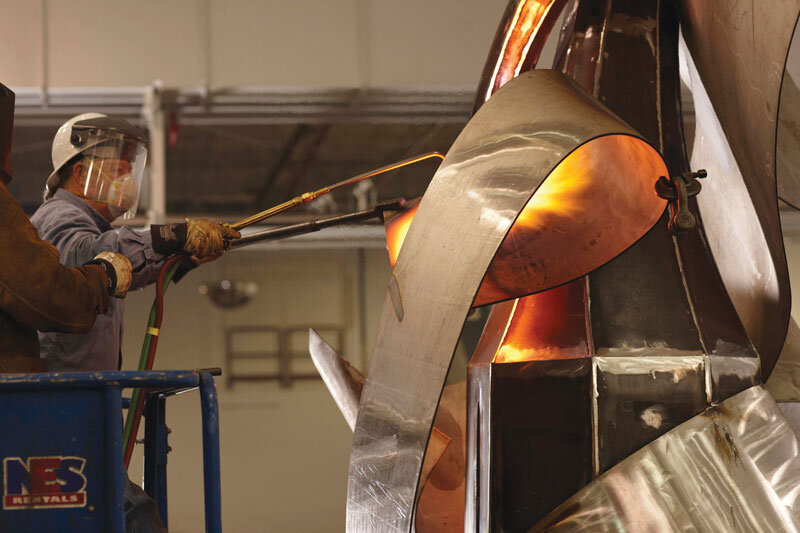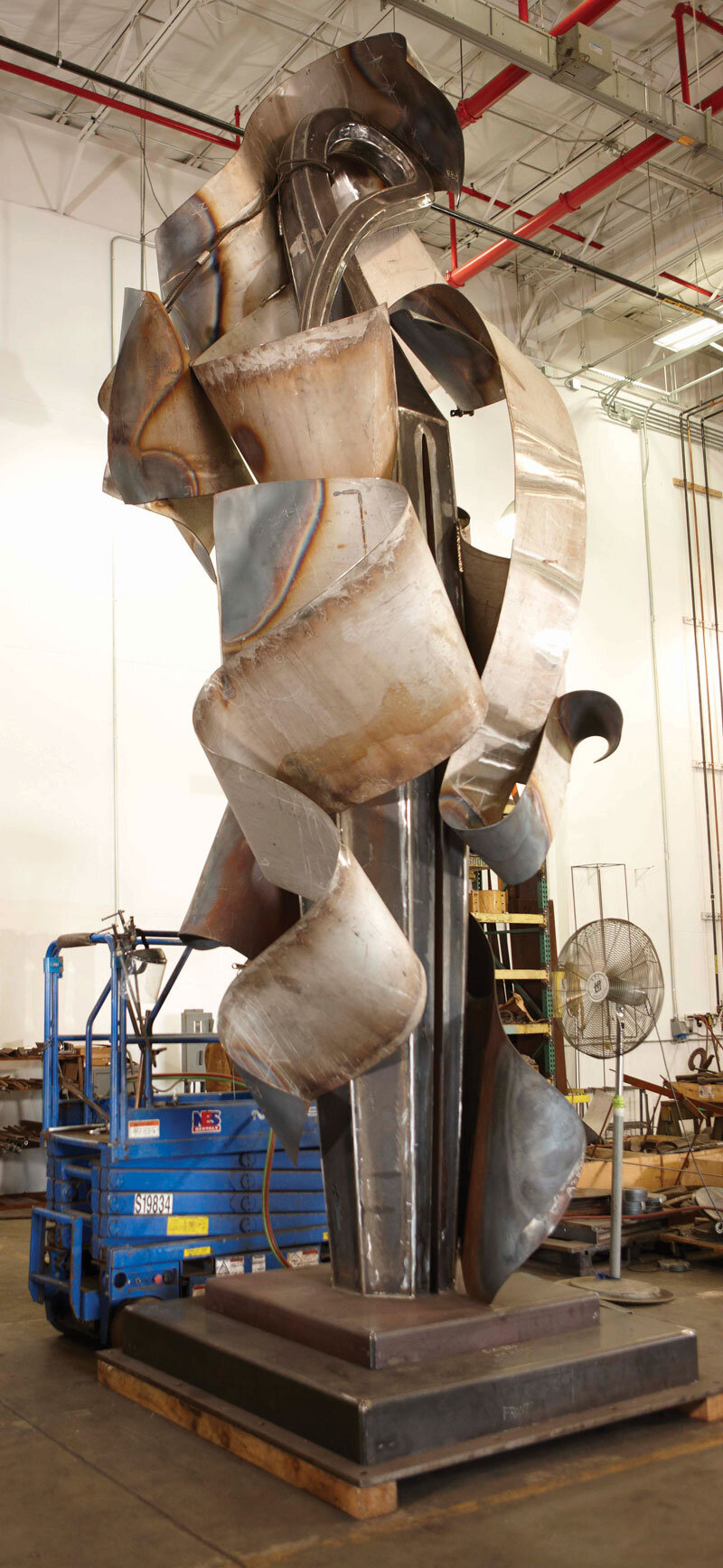SCULPTING A PARK AVENUE EXPERIENCE
Stylish and full of urban panache, New York City’s Park Avenue is an unofficial emblem of the energy and sleek success that defines the city. From June to mid-November of 2013 Rochester will have a distinctive presence there thanks to one of its artistic ambassadors: Albert Paley, a world-renowned metal sculptor who has called Rochester home since 1969.
In December 2010, Paley was asked by The Sculpture Committee of The Fund for Park Avenue if he’d be interested in developing a series of large-scale sculptures to run along Park Avenue from 51st Street up to 68th Street near the Park Avenue Armory. Outdoor art exhibitions along the historically significant Park Avenue malls are presented by The Sculpture Committee and the City of New York’s Department of Parks & Recreation. For Paley, the invitation was both an honor and a unique opportunity to get his work in front of millions of people. Because of their massive size, Paley’s sculptures are typically built to occupy a permanent site but this venue allows him to create his enormous pieces for a temporary exhibition.
Creating 13 immense, outdoor sculptures in a dynamic, iconic urban setting poses some impressive challenges. Their large size means each sculpture influences the surrounding landscape and architecture and ultimately, how people perceive and interact with the space. Part of Paley’s incredible talent is his ability to understand this balance. When asked about his sculptures’ sense of integrating art and architecture Paley thoughtfully responds, “There is a dialogue between a building and the landscape design. By adding a large-scale sculpture, a three-part equation is created where the sculpture acts as a counterpoint. It creates a landmark.”
Paley takes great care to be sympathetic and responsive to each site while considering what he describes as “emotional ambiance.” As a result there is a spectrum of design across the 13 sculptures. One particular building has a definitive horizontal façade so its corresponding piece is 50 feet long and horizontal in nature. In other areas structures are more compressed with a delicacy in the façade. Sculptures along these spaces are more vertical and delicate. The majority are about 20 feet tall and weigh 5,000 to 15,000 pounds. Within the 13 pieces there is a spectrum of metals: brightly colored, painted steel, stainless and weathering steel. Paley says of his sculptures, “They are non-literal and use an interplayof organic and inorganic form with a sense of balance as if they are coming apart and together at the same time.”
Large-scale sculpture poses more than artistic challenges. Because Paley’s work is so titanic in size, each piece has to be evaluated and verified by engineers for structural integrity. Typically, Paley starts with a sketch then translates it to a cardboard model. Engineering input is a serious consideration – hurricane winds, tipping factor, and weight load are a few of the safety concerns. Next Paley creates a small metal model about three to four feet for a 20-foot sculpture. Engineering, fabrication and shipping concerns are all factored. Once the metal model is complete Paley goes to the full size but Paley may shift elements as the full scale is constructed.
If you can’t make it to New York City to view Paley’s exhibition you can catch some of his large-scale sculptures around the Rochester area. A few sites include Bausch & Lomb headquarters, Strong Museum of Play, and Rochester Institute of Technology, and in the summer of 2013, a stainless steel sculpture will be installed at the entrance of the Memorial Art Gallery. For more information on Albert Paley go to www.albertpaley.com. See the installation of the NYC exhibition at our website designnymagazine.com.
Albert holds the Charlotte Fredericks Mowris Endowed Chair at the School for American Crafts, College of Imaging Arts and Sciences, Rochester Institute of Technology, where he is an Artist-in-Residence




